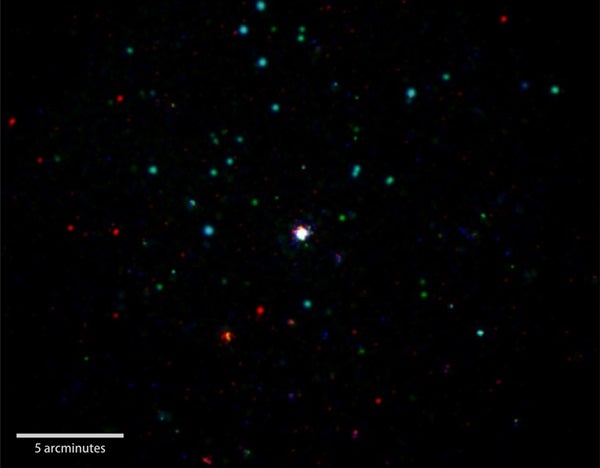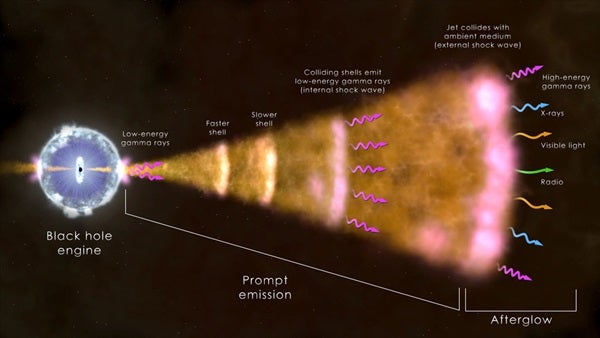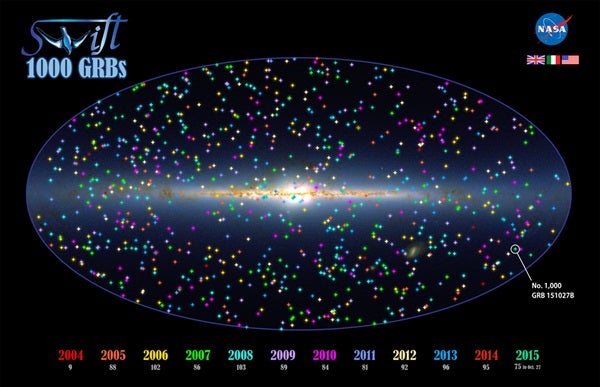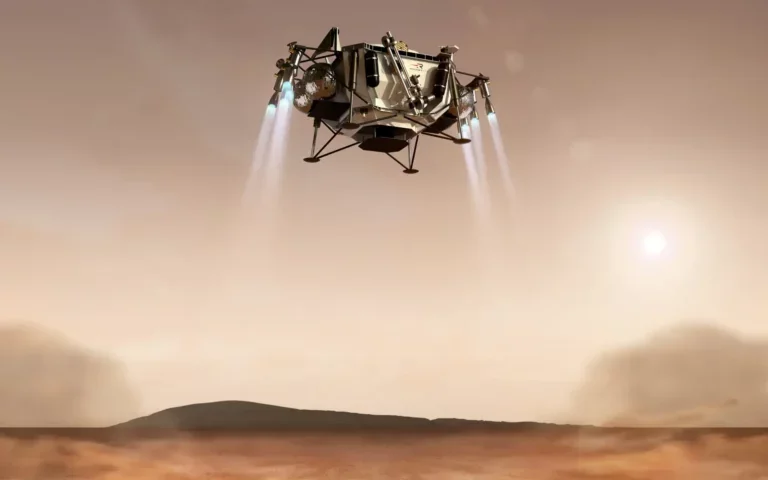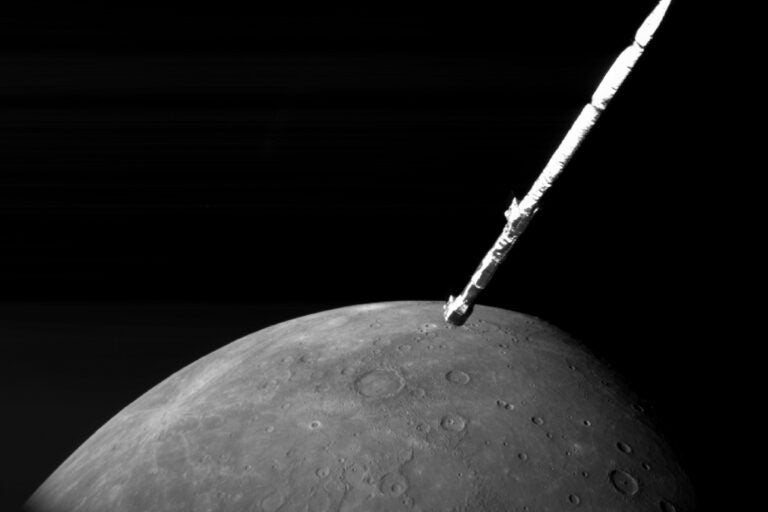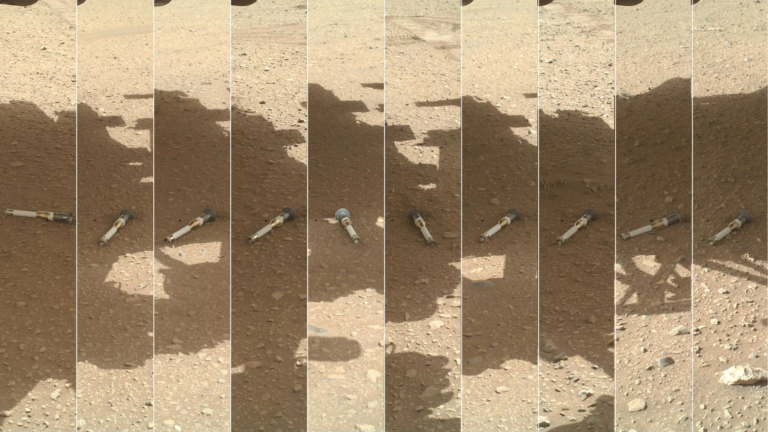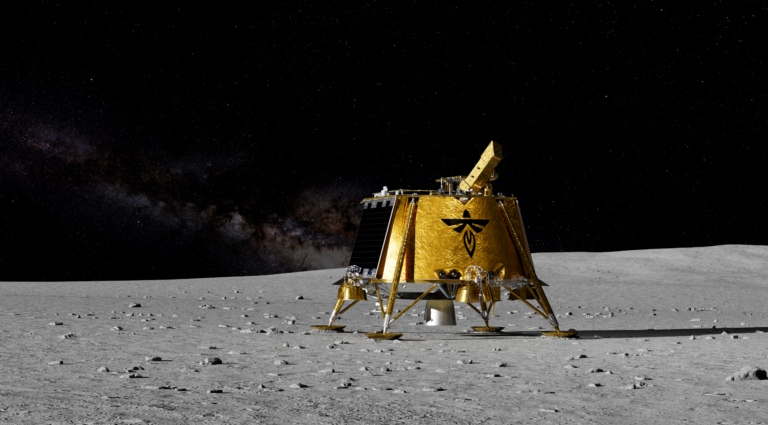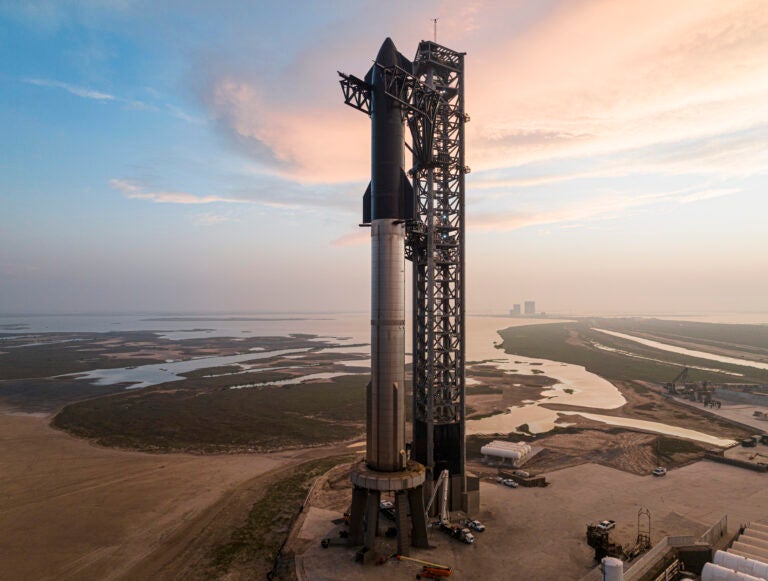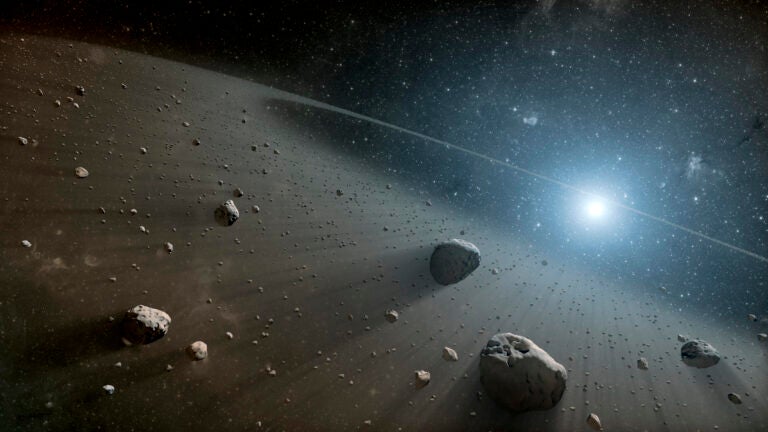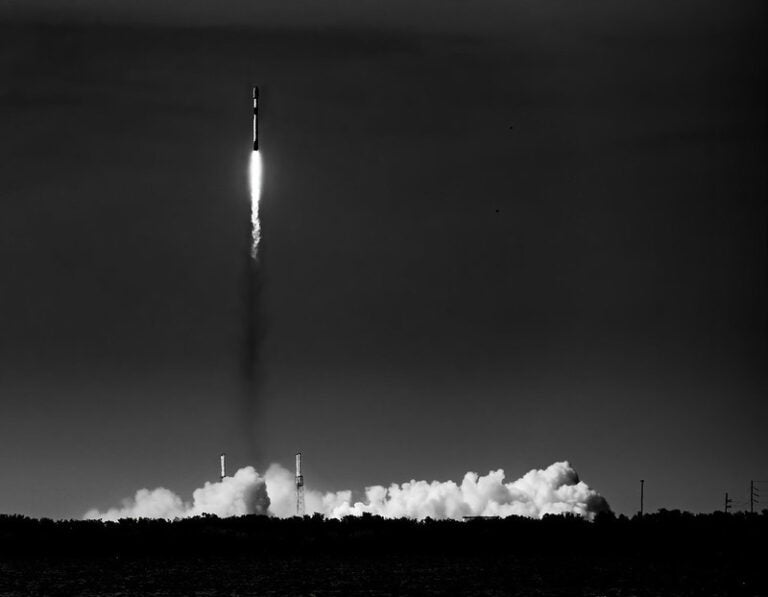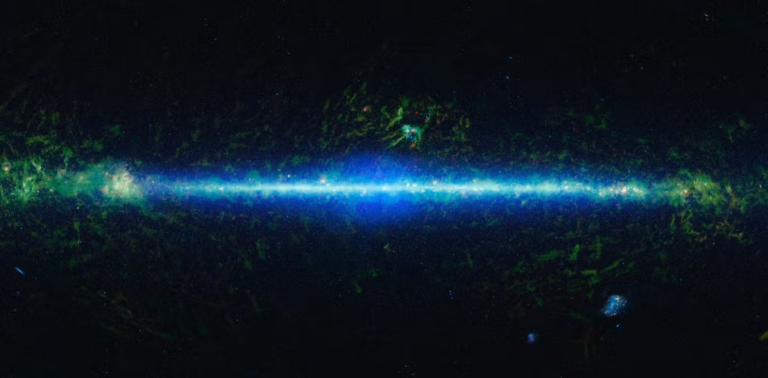“Detecting GRBs is Swift’s bread and butter, and we’re now at 1,000 and counting,” said Neil Gehrels from NASA’s Goddard Space Flight Center in Greenbelt, Maryland. “The spacecraft remains in great shape after nearly 11 years in space, and we expect to see many more GRBs to come.”
A GRB is a fleeting blast of high-energy light, often lasting a minute or less, occurring somewhere in the sky every couple of days. Scientists are looking for exceptional bursts that offer the deepest insights into the extreme physical processes at work.
Shortly before 6:41 p.m. EDT on October 27, Swift’s Burst Alert Telescope detected the 1,000th GRB as a sudden pulse of gamma rays arising from a location toward the constellation Eridanus. Astronomers dubbed the event GRB 151027B, after the detection date and the fact that it was the second burst of the day. Swift automatically determined its location, broadcast the position to astronomers around the world, and turned to investigate the source with its own sensitive X-ray, ultraviolet, and optical telescopes.
“Short” bursts last less than two seconds — and sometimes just thousandths of a second. Swift observations provide strong evidence that these events are caused by mergers of orbiting neutron stars or black holes.
Once a GRB is identified, the race is on to observe its fading light with as many instruments as possible. Based on alerts from Swift, robotic observatories and human-operated telescopes turn to the blast site to measure its rapidly fading afterglow, which emits X-rays, ultraviolet, visible and infrared light, and radio waves. While optical afterglows are generally faint, they can briefly become bright enough to be seen with the unaided eye.
“Over the years, astronomers have constantly refined their techniques to get their telescopes onto the burst site in the shortest possible time,” said John Nousek from Penn State University in University Park, Pennsylvania. “In fact, the process to follow up Swift GRB alerts is as productive as ever.”
Astronomers now have distance measurements for about 30 percent of Swift GRBs, which makes it possible to investigate how these powerful events are distributed across space and time. The distance record is held by GRB 090429B, which exploded at the dawn of star formation in the universe. Its light took more than 13 billion years to reach Earth.
In addition to its GRB studies, Swift conducts multiwavelength observations of a wide array of astrophysical phenomena, from nearby comets and asteroids to faraway quasars and blazars, galaxies where supermassive black holes produce unpredictable high-energy flares.
“Swift is an amazingly versatile observatory, with gamma-ray burst detections every week, target-of-opportunity observations every day, and with a vast users’ community covering all fields of astronomy,” said Patrizia Caraveo from the Italian National Institute for Astrophysics in Milan.
“Swift has been a fabulous discovery machine, finding previously unknown types of outbursts from stars, galaxies, and from gamma-ray bursts themselves,” said Julian from the University of Leicester. “It’s great to see our national contributions to the mission’s X-ray and UV/optical telescopes having such a big impact.”
With new types of astronomical observatories ramping up, Swift is poised to take on a new role. Ghostly particles called neutrinos have been detected from outside the solar system, and soon astronomers expect that gravitational wave observatories will detect the first ripples in space-time, a phenomenon predicted by Einstein’s relativity theory. Swift scientists plan to use the satellite’s capabilities to search for high-energy light associated with neutrino and gravitational wave sources.

